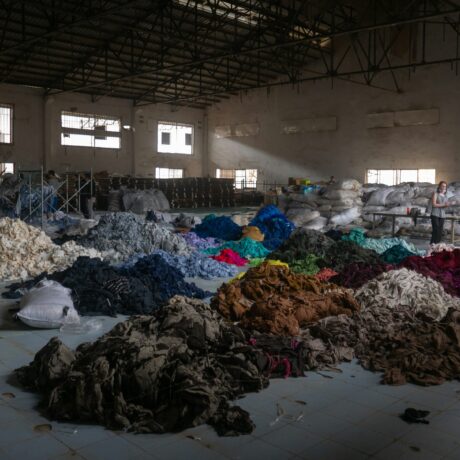Black Friday: The Sale That Cost the Planet
When a Sale Becomes a Season
There was a time when “Black Friday” meant exactly one thing: accountants enjoying their once-a-year moment of triumph as the books edged out of the red. But somewhere between post-war America and the algorithmic precision of modern e-commerce, this modest milestone of fiscal relief morphed into something else entirely – a global shopping frenzy with all the subtlety of fireworks in a library.
Today, it is a high-velocity ritual of countdown clocks, overnight warehouse shifts, carbon-intensive deliveries, and dopamine-fueled decision-making disguised as “savings.” What was once a single sales day has stretched into a month-long marketing tempest – part psychological experiment, part logistical marathon, part environmental sinkhole. And at the centre of it all sits the consumer: exhilarated, overwhelmed, and often left questioning why the thrill fades faster than the parcel arrives.
To understand how Black Friday became both a cultural spectacle and a planetary stress test, we need to trace its curious origins.
The Birth of Black Friday
The first version of Black Friday wasn’t glamorous. In 1950s Philadelphia, it referred to the mayhem that erupted the day after Thanksgiving, when tourists flooded the city for the Army–Navy football game. It was less “doorbuster deal” and more “police officers needing annual leave” (Turner, 2013).
Retailers hated the name – until they realised they could monetise it. By the 1980s, Black Friday had undergone a makeover worthy of a reality TV glow-up. The narrative was rewritten: soaring profits, a consumer holiday born. From there, the sales expanded, spilling across borders, months, and marketing departments faster than you can say “limited time only.”
With that shift came a new cultural truth: Black Friday stopped reflecting demand and started manufacturing it. Scarcity, urgency, countdown timers – the whole thing became less tradition and more psychologically engineered for impulse.
Impulse Purchases: The Brain vs. the Cart
Black Friday is a masterclass in seduction: flashing deals, ticking timers, and neon tags conspiring to turn “maybe later” into “buy now.” The weekend’s entire architecture is designed to spark reactive, not reflective, buying. Neuroscientists call it temporal myopia: the brain’s tendency to prioritise immediate reward over long-term consequences (Kable & Glimcher, 2007). Retailers simply call it “great performance.”
The result? A nation of shoppers reflexively filling their baskets at speeds normally reserved for Olympic trials.
And then comes the crash. Enter buyer’s remorse, the retail-world hangover. It arrives once the dopamine hit evaporates, replaced by the realisation that you do not, in fact, need a 24-pack of scented candles named Winter Forest Whispers, the dress you panic-bought in three colours, or the smart juicer you’ll use exactly once before it becomes a dust gathering appliance.
Regret isn’t just emotional – it’s environmental. The moment remorse sets in, the returns begin. And that’s when the hidden damage really unfurls.
The Logistics Trap: When Returns Outweigh the Sale
The true carbon cost of Black Friday isn’t in the buying – it’s in the boomerang effect. Reverse logistics (a polite way of saying “getting your rejected parcels back where they came from”) is one of the most emission-heavy parts of the retail supply chain (MIT Center for Transportation & Logistics, 2021).
A return often travels more kilometres on its way back than it did on its way to you. Many get shipped, unpacked, inspected, re-packaged, re-shipped, and re-sorted. Some fly. Some sit in warehouses. Thousands never make it back to the shelves at all, written off entirely.
A returned item can produce up to 30% more carbon emissions than its original delivery (Ellen MacArthur Foundation, 2020) – and that’s before you factor in the packaging: layers of bubble wrap, cardboard, tape, and paper that get reused because the first round wasn’t enough (GreenFulfilment, 2020).
Black Friday’s sales surge also pushes fulfilment centres into overdrive, forcing brands to charter extra trucks, planes, and last-mile drivers – a carbon spike invisible to the consumer but painfully obvious to the atmosphere (MIT Center for Transportation & Logistics, 2021).
Ultimately, the environmental story of Black Friday is hardly a fairy tale. It’s more of a Greek tragedy… with express shipping.
Ghost Waste: The Returns You’ll Never See
The dirtiest secret of Black Friday returns? Not everything gets a second chance. Some items are too expensive to process. Some lose value the instant they leave the store. Some cost more to restock than they’re worth. And so, quietly, they’re diverted to liquidation pallets, textile shredders, incinerators – or, worst of all, landfill (GoTRG, 2021).
Black Friday fuels a spike in “ghost waste”: perfectly usable products that never get used, never get loved, and never fulfil their original purpose. They travel from factory to consumer to bin without ever becoming part of a life.
If overconsumption had a mascot, it would be the Black Friday return.
Pause Before You Purchase
Black Friday will no doubt continue (retail doesn’t walk away from billions). But consumers can rewrite their part in the script.
The question to ask this year isn’t, “Am I getting a good deal?”
It’s, “Why do I want this – and what will it cost beyond the price tag?”
Black Friday’s real currency is emissions, waste, energy, and the quiet erosion of mindful consumption. The most radical act this season might simply be to pause. To shop slowly. To opt out of the frenzy and into intention.
Because a bargain isn’t a bargain if the planet pays full price.








